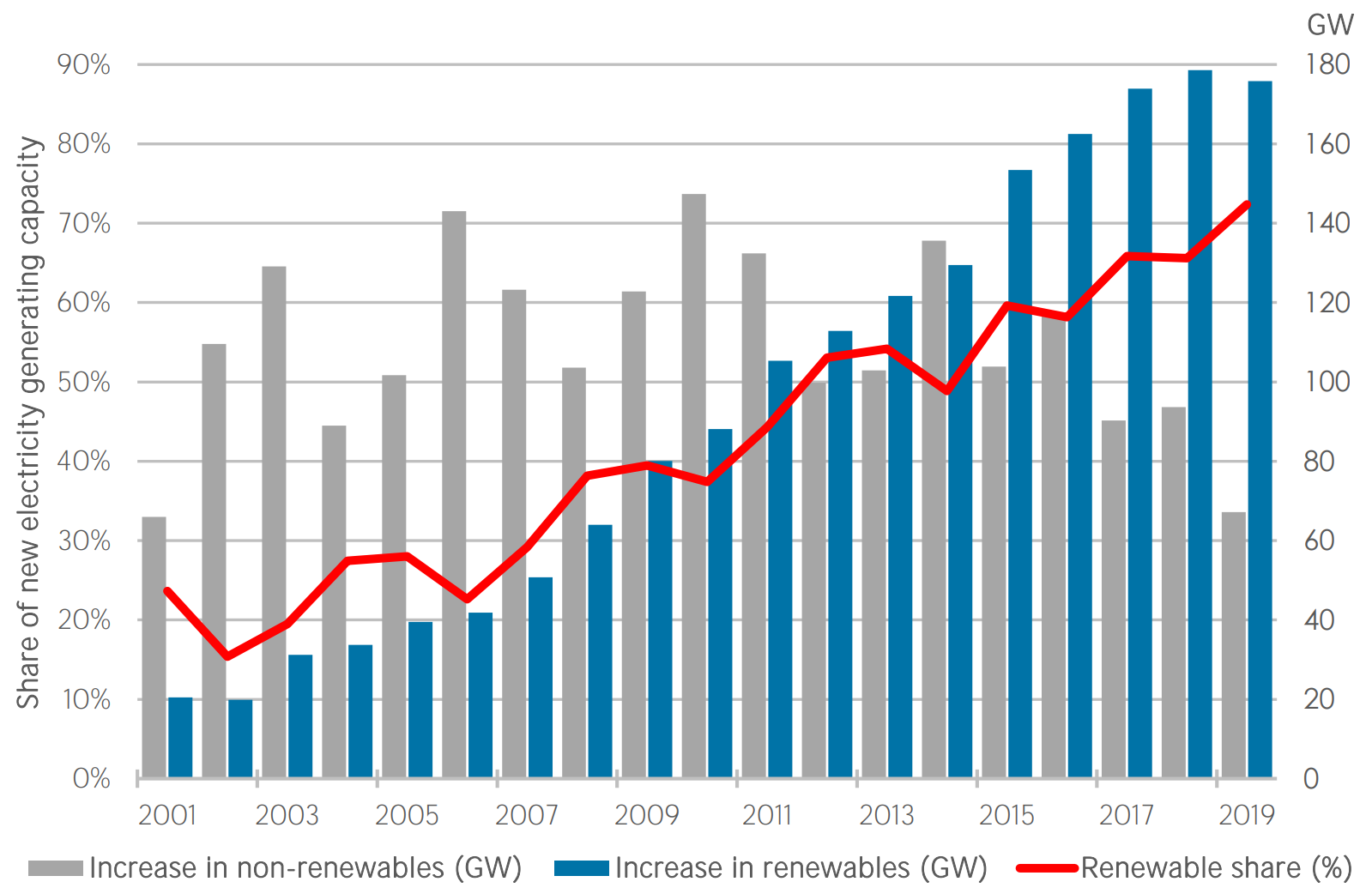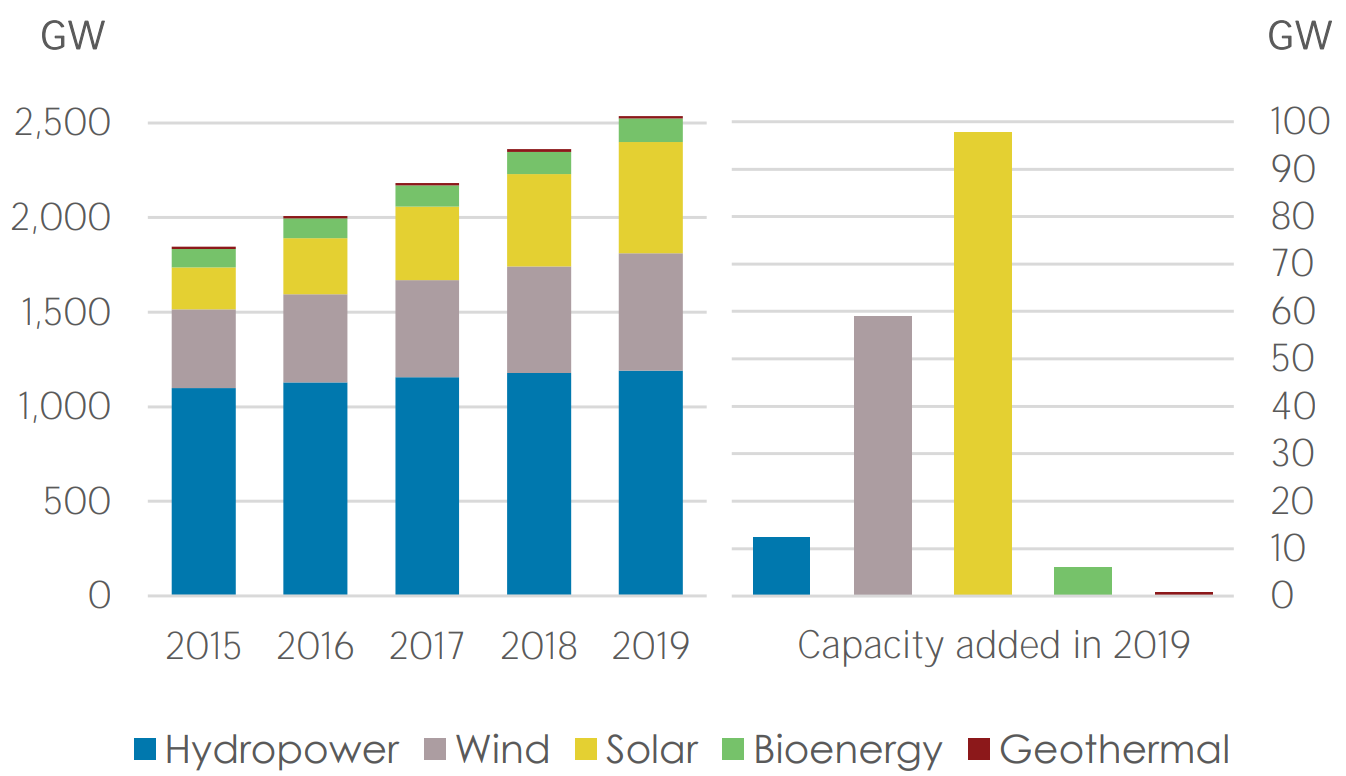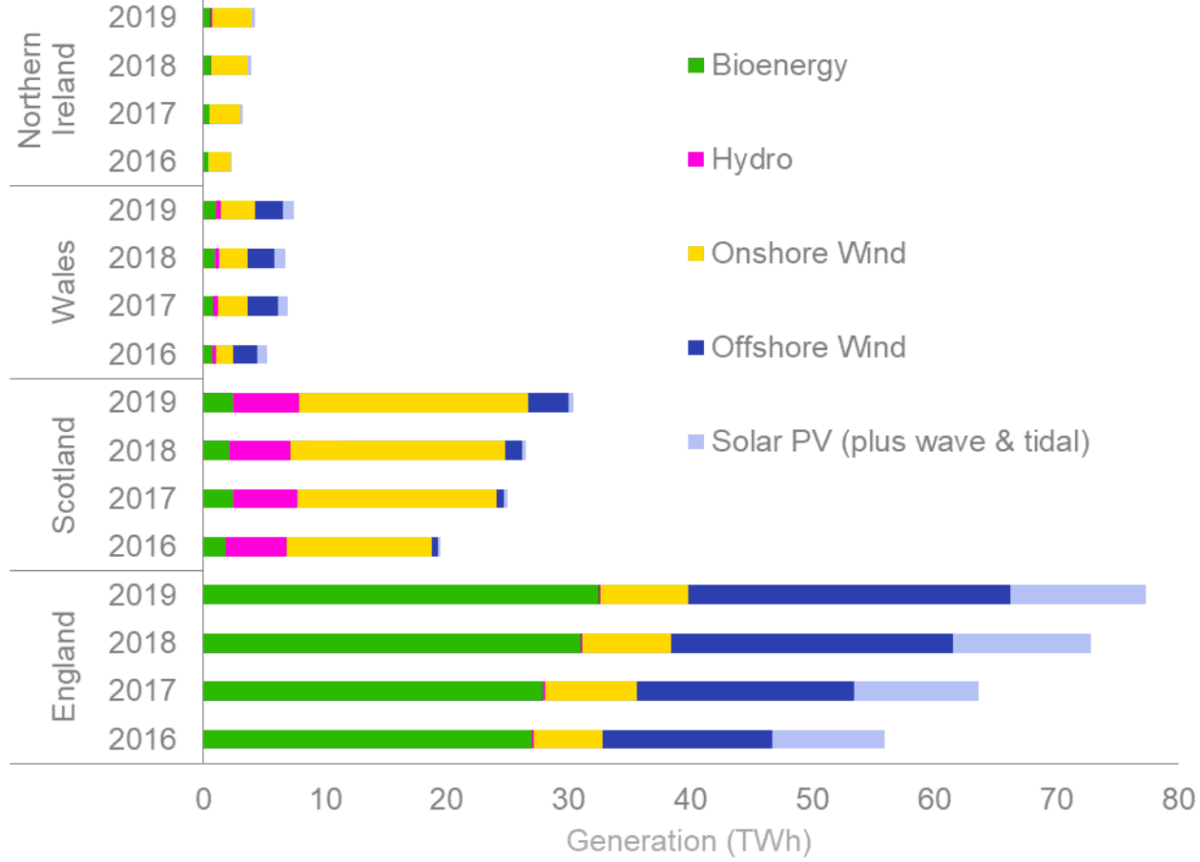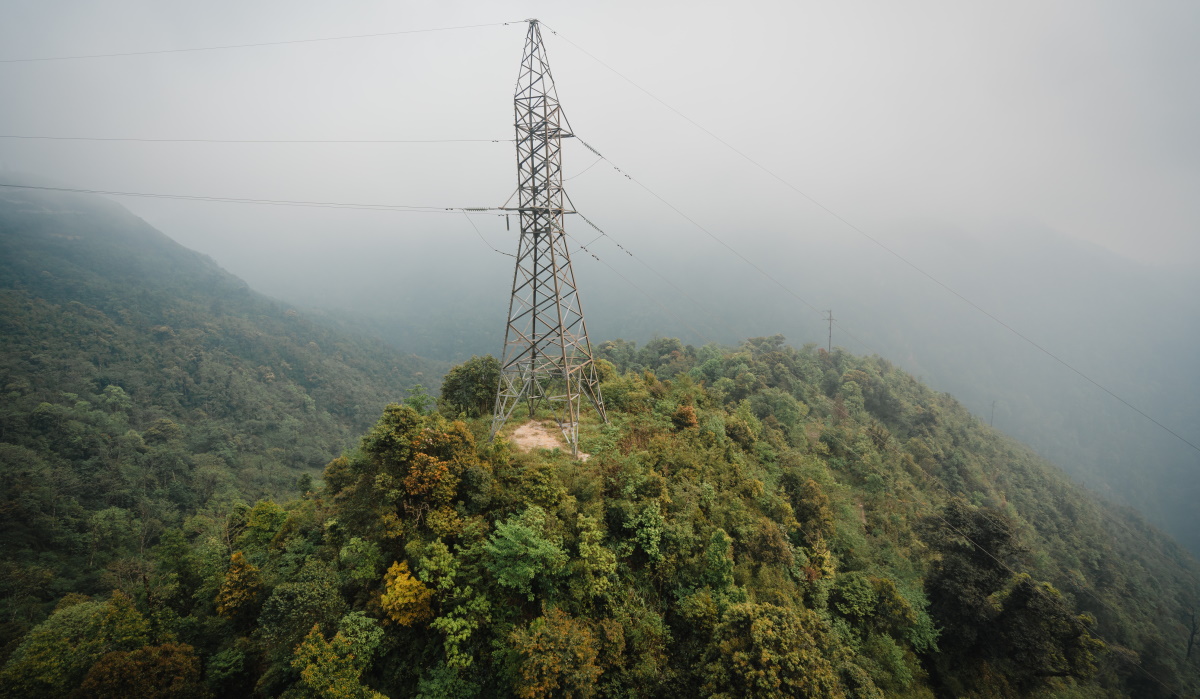April 2020: Vacancies, record breaking renewables, plus coronovirus impacts on energy and air pollution
Welcome to the April 2020 newsletter from the Oxford Martin School Programme on Integrating Renewable Energy! If you like what you read, please do subscribe directly!
Do we have the institutions we need to address climate change?
 José Maria Valenzuela is a doctoral student in the Blavatnik School of Government at the University of Oxford. He is exploring the role of knowledge brokers, regulatory capacity and the decarbonisation of electricity systems.
José Maria Valenzuela is a doctoral student in the Blavatnik School of Government at the University of Oxford. He is exploring the role of knowledge brokers, regulatory capacity and the decarbonisation of electricity systems.
![]() In this short video, José sets out how his research asks whether the world has the institutions required to address climate change, and if the answer is no, what can we do about it?
In this short video, José sets out how his research asks whether the world has the institutions required to address climate change, and if the answer is no, what can we do about it?
Electricity system authorities have adopted the mandate to pursue low-carbon electricity generation as this is one of the most feasible strategies for decarbonisation in industrial economies. The problems posed by renewable energy require regulatory innovations however. Regulators need appropriate knowledge to understand the problems of variable generation and identify the innovative means or tools available to overcome them. Where does this knowledge come from?
Click here to read more about Jose’s research
Vacancies
 The Oxford Sustainable Finance Programme is advertising a vacancy for a Research Assistant. This Programme is undertaking pioneering work at the intersection between the environment and the financial system.
The Oxford Sustainable Finance Programme is advertising a vacancy for a Research Assistant. This Programme is undertaking pioneering work at the intersection between the environment and the financial system.
The successful candidate will work on a new project: ‘The energy transition and changing financial institution risk preferences. This aims to examine the pricing of climate-related transition risk and how it affects the costs of capital and thus the economics for energy projects worldwide.
Click here for more details. The closing date is Friday 17th April 2020 at 12:00 (UTC +1).
The Programme on the Future of Cooling has a research vacancy for a Research Associate in Sustainable Cooling Production Networks, at the University of Oxford.
This two-year post will focus on how the cooling production network can expand access to cooling, while improving the environmental sustainability of the products and their production. Anyone with knowledge of production networks, life cycle assessment, or work on the circular economy should check it out!
Click here for full details. The closing date is 15 April 2020 at 12:00 (UTC +1).
The global march of renewables
Across the world
The International Renewable Energy Agency (IRENA) has reported that renewable technologies comprised 72% of all global energy expansion in 2019: a record value and continuation of the trend from previous years. At 72%, renewable technologies have continued to dominate new additions to the world’s power generation mix in 2019, with 90% of the new power coming from wind and solar power.
The total installed renewable capacity isn’t uniformly spread across the world however: over half of new installations were in Asia, which now has 44% of total global capacity. Much of this capacity is found in China, India and Japan which dominate other counties in this region.
Europe has the next largest increase, with 23% of global capacity (with Germany dominating), then North America with 15%. There is very little installed renewable energy in the Middle East (1% of the global share), Africa (2%) and Oceania (2%). However the is some hope as the world regions seeing the biggest growth in terms of percentage change in 2019 are Oceania (8.4%) and the Middle East (12.6%) with Asia (9.3%) continuing to dominate growth and installed capacity.
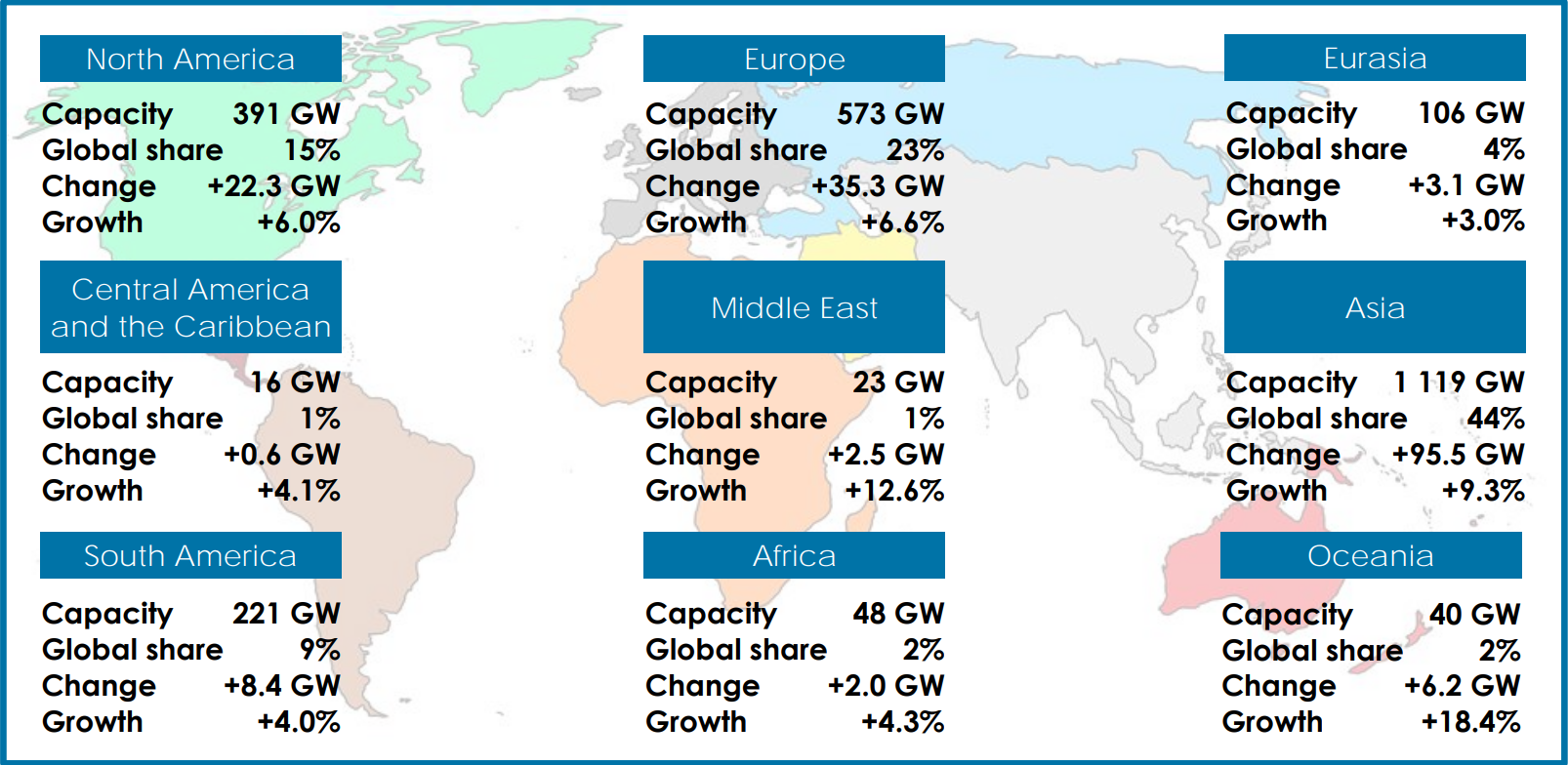 While this is excellent news, we must still be mindful that non-renewable energy infrastructure is still being developed, though less than previous years, with net growth in Asia, the Middle East and Africa.
While this is excellent news, we must still be mindful that non-renewable energy infrastructure is still being developed, though less than previous years, with net growth in Asia, the Middle East and Africa.
Closer to home
2019 was an amazing year for renewable electricity generation in the UK which increased by 8.5% from 2018. Overall, electricity generated by renewables reached a high of 36.9% in 2019; up from 33% on the previous year.
Renewable electricity capacity increased by 6.9% in 2019 with half of coming from new offshore wind developments.
2020 has started off well for the UK. Over Jan to March 2020, the storms and reduced demand meant that renewable energy became Britain’s main power source, providing more power than all fossil fuels combined, and 45% of electricity generation. Similar conditions saw renewables meet 52% of Germany’s gross power consumption over the same period.
Scotland is making huge progress towards its target to generate the equivalent of 100% of its electricity demand from renewable sources by end of 2020. In 2019, 90% of its electricity was generated by renewable energy, a record high, mostly by onshore wind; a rise of 13.8% from 2018.
Scotland’s ability to meet its target by 2020 will be affected by the demand for energy, and also the roll out of projects in the pipeline: aspects which be affected by the coronavirus crisis.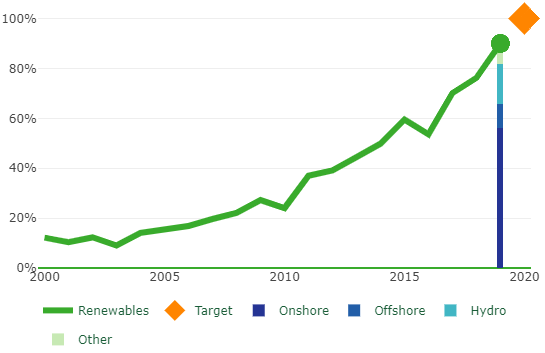
The number of planning applications for clean energy developments in the UK has hit a four-year high. A total of 269 planning applications for wind, solar and bioenergy projects were submitted in 2019; a 32% increase from the previous year. This increase reflects the desire of energy companies to cut carbon emissions and reach climate goals, and take advantage of falling costs and available finance.
More applications are expected in the future, following Westminster’s proposal in March 2020 to lift restrictions on onshore wind projects and other ‘proven’ technology, and include them in the next Contracts for Difference auction round in 2021.
Cornwall Insight’s Chart of the Week identifies, from the total pipeline of renewable projects with planning permission, 13 GW of eligible renewable technologies considered most likely to bid in the Contracts for Difference auction.
These are shown as a heat map, with the projects located against distribution regions. The ‘hottest’ areas of the map are Scotland and the south eastern coast of England. This reflects that 32% of the eligible projects comprise onshore wind, mostly in Scotland; and 46% are offshore wind, again mostly in Scotland but also off the east coast of England.
The invitation to tender for new seabed leases by the Crown Estate will undoubtably increase the size of the renewable pipeline for CfD auctions beyond 2021.
The effect of the coronavirus
…on energy demand
Worldwide, energy demand has fallen, as economic activities reduce. Electricity production reduced by over 8% in China in January and February. Every day is “like Sunday” in Europe, in terms of energy use, with reduction of up to 25% in France and Italy for example.
Data from first week (23-29 March) of the lockdown in the UK, shows a 13% reduction in electricity demand compared to a similar time in 2019. The pattern of use shows absence of the normal weekday morning peak, reflecting the change in work practices but the same evening peak, showing that the domestic behaviour patterns remain similar (cooking, heating etc).
While demand has reduced and use patterns have changed, due to the shrinkage of industrial and commercial activities, the fact that people are spending much more time at home during the day will mean that many will face higher energy bills. Estimates suggest that some households will use 25% more electricity and 17% more gas per day, which will increase energy bills by £52 per week, for those on standard variable tariffs. This puts great pressure on people, not just those in fuel poverty, but all now facing an uncertain economic future.
…on the UK Power sector
 The response of the UK power sector has been to reassure people that there is a minimal risk to power supply and so they should keep calm and boil the kettle.
The response of the UK power sector has been to reassure people that there is a minimal risk to power supply and so they should keep calm and boil the kettle.
The industry has prioritised emergency response, repairs and work critical for security of supply and resilience, control room and call centre operations. Activities not considered essential, such as routine maintenance works, installation of EV charging stations and solar panels have stopped.
The UK energy sector employs 144,000 people many of whom as considered key workers, and 620,000 more via the supply chain: equivalent to 1 in 46 jobs. Some companies have now furloughed staff who have then engaged with volunteer schemes. Suppliers have agreed to further help for those on pre-payment meters, and/or in financial distress.
There have been comments that the decentralised power system in the UK helps us to be resilient. Should restrictions remain in place for a very long time, preventing essential, ongoing, maintenance, then some thermal power plants may need to be taken offline. “The advent and scale of renewables in our supply system is helpful here as the size of renewable plants is generally much smaller, and the national power system will be better able to handle withdrawal of multiple smaller sites.”
…on air quality
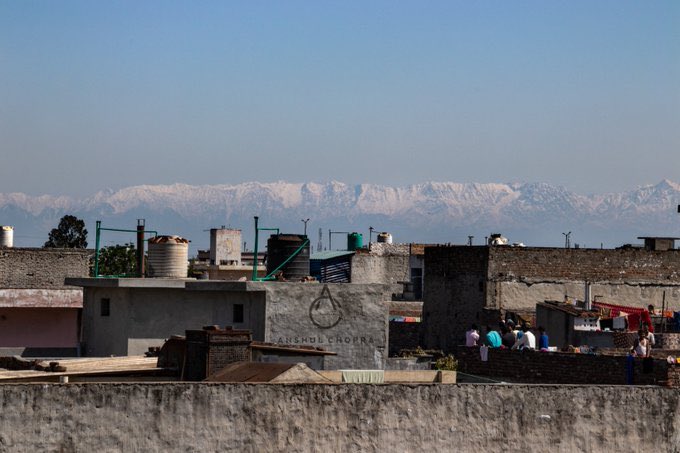 Image by Anshul Chopra @anshulchopraa
Image by Anshul Chopra @anshulchopraa
A silver lining is the huge improvement in air pollution, across the world. Data from NASA show the significant decreases in NO2, a critical health and environmental pollutant, over China, following the shutdown of Wuhan on 23 January. Similarly the reduction in vehicle movements and industrial operations has caused particulates and nitrogen dioxide (NO2) levels to fall across the world – and up to 60% in some cities in the UK. In India, the drop in pollution has meant that the Himalayas have become visible to people in Punjab for the first time in 30 years; while measurements from Delhi show a 44% reduction in particulates (PM10) the day after the lockdown on 22 March 2020.
Vehicle emission are responsible for the early deaths of 10 thousand people in the UK each year, and 7 million worldwide, with diesel vehicles being the main problem. The damage to people health is estimated to cost the NHS and society in general more than £6 billion per year. This reduction in air pollution will help many people with respiratory conditions and alleviate symptoms.
Check out this UK air pollution forecasting tool to see what’s like near you.
The improvement in air quality may be short-lived if environmental policies are relaxed now and into the future. For example, the Environmental Protection Agency of the USA has declared that it will not enforce compliance with existing regulations, allowing companies to break pollution laws during coronavirus pandemic. Further, if the clean energy transition is hampered in any way, and the low oil price remains attractive to a wreaked global economy, then air pollution will increase back to how ti was before the coronavirus lockdown.
Studies on coronavirus and on SARS has found that exposure to air pollution increases vulnerability to these diseases. Living in cities and other places with polluted air compromises lung nation and can make Covid-19 even more deadly.
More and more reasons to put effective air quality plans in place and provide traffic free routes to encourage walking, cycling, and better health!
…on the energy transition
The International Energy Agency is providing ongoing analysis on the effects of the coronavirus crisis, making recommendations for governments and industry to ensure affordable, secure and sustainable future energy systems. As the world responds to the immediate crisis, the IEA warn that we must not lose sight of a major challenge of our time: climate change and the clean energy transition.
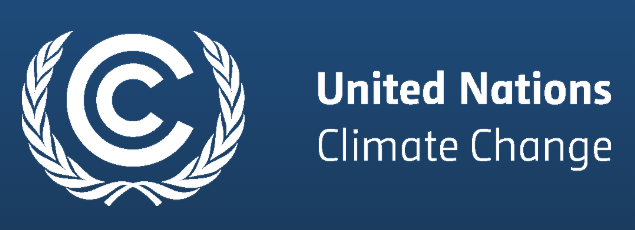 Despite the postponement of COP26, countries still need to submit their climate plans, or Nationally Determined Contributions, by the end of 2020, according to the 2015 Paris Agreement, setting out both their short term targets for 2030, and longer term targets for 2050.
Despite the postponement of COP26, countries still need to submit their climate plans, or Nationally Determined Contributions, by the end of 2020, according to the 2015 Paris Agreement, setting out both their short term targets for 2030, and longer term targets for 2050.
The economic stimulus plans being drawn up must integrate with these climate plans, and include large-scale investment to boost the development, deployment and integration of clean energy technologies as these will have a double effect: stimulating economies and accelerating clean energy transitions. The coronavirus shutdown has now made coal the most expensive fossil fuel, following the collapse of oil prices.
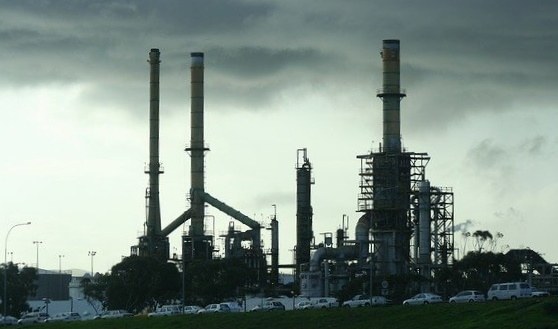 The low oil price is a result of over-production by major areas such as Russia and Saudi Arabia who are battling over market share. The effect of the coronavirus on massively suppressing demand, has made the price war irrelevant, and has made a coordinated supply response impossible to achieve, according to Goldman Sachs. While oil is very cheap at the moment making it attractive to buyers, the fact that supply is way in excess of demand is causing critical storage issues leading to well shutdowns, storage at sea, and paying customers to take oil.
The low oil price is a result of over-production by major areas such as Russia and Saudi Arabia who are battling over market share. The effect of the coronavirus on massively suppressing demand, has made the price war irrelevant, and has made a coordinated supply response impossible to achieve, according to Goldman Sachs. While oil is very cheap at the moment making it attractive to buyers, the fact that supply is way in excess of demand is causing critical storage issues leading to well shutdowns, storage at sea, and paying customers to take oil.
The effect of coronavirus may signal the end of the oil industry, as production companies go bankrupt, and because a lot of money will be needed to repair and bring wells back into production. A silver lining is that the energy industry will “finally achieve the restructuring it so badly needs. “We have long argued that it is the supply and demand of capital that matters, not the supply and demand of barrels; as long as there is capital, companies can withstand difficult periods and the barrels always come back.”
The IEA comment that with oil at such a low price, countries should lower or remove subsidies for fossil fuel consumption. Around USD 400 billion of subsidies exist worldwide, with more than 40% of them designed to make oil products cheaper. And if the product is cheap, there is little incentive to roll out energy efficiency measures. Already energy efficiency efforts are shutting down in the United States; the sector employs at least 2.4 million and many of these jobs are now at risk.
An example of where subsidies continue to be granted to fossil fuels is the case of Shell in the UK. In the mandatory Report on Payments, we can see that the tax regime in the UK has permitted the oil giant Shell, to pay no new taxes in 2019, instead receiving a $116.5 m (£94.5 m) refund from HM Revenue and Customs. This subsidy relates mainly to the decommissioning of the Brent oil and gas field, which is now being funded by the taxpayer, instead of Shell and its shareholders.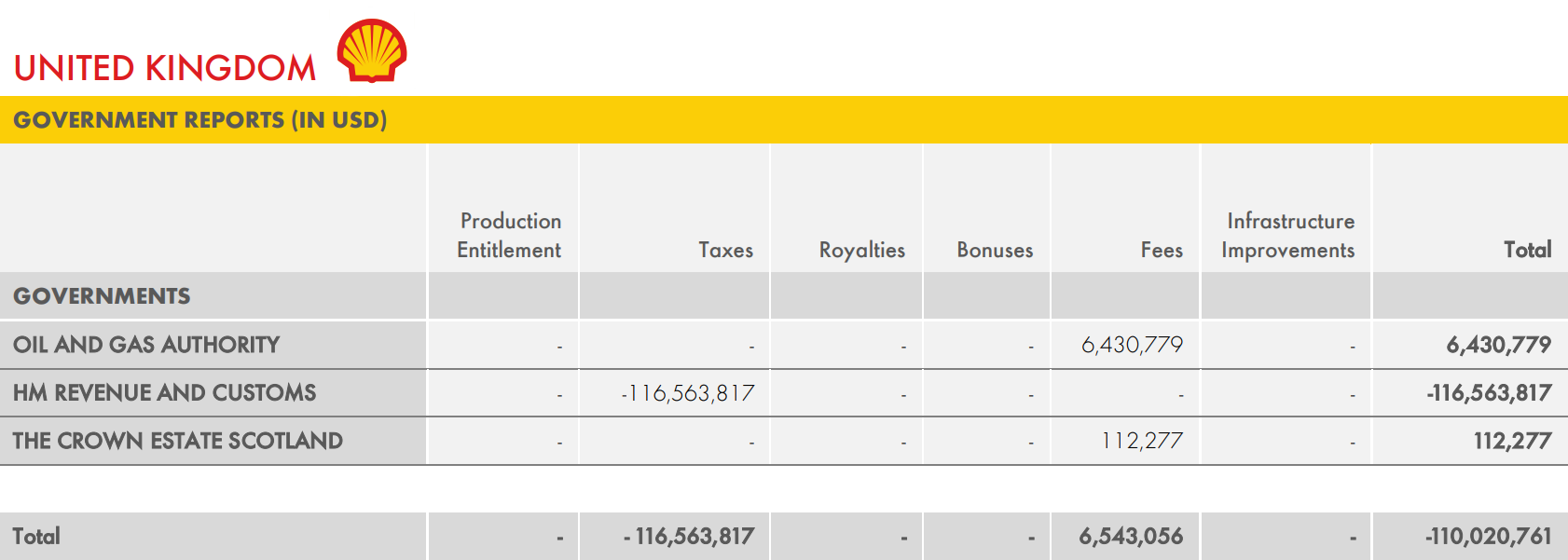
Such subsidies as these, and the billions poured into overseas fossil fuel projects via the UK Export Finance initiative, are a real barrier to the energy transition and action on climate change.
…on a sustainable recovery
The IEA has set out 5 areas where governments can act to make the economic recovery from coronavirus an environmentally sustainable one, and minimise emissions:
- Ignite demand through “cash for clunkers”
- Put clean energy jobs at the centre of stimulus packages
- Build state-of-the-art electricity systems
- Develop and scale up the next generation of energy technologies
- Bring in more private money
The cost of key renewable technologies, such as solar and wind, are much, much lower than previous periods when governments launched stimulus packages. This means that they can quickly fill the gap and supply the power needed when demand rises post-lockdown. Pursuing policies to improve the energy efficiency of buildings will create jobs, reduce energy bills and reduce emissions.
The Oxford Sustainable Finance Programme argue that a long term approach is needed as it is likely the coronavirus bailouts are not likely to be one-offs but could be a semi-permanent feature of our economy for decades to come. As such it may be better for the government to take a long-term stake in struggling companies and demand bolder climate strategies as a shareholder to make permanent shifts.
There are calls for coordinated action across EU member states and the European Commission to expand the scale and scope of the Green Deal, and exploit complementarities by issuing bonds to fund a comprehensive Covid-19 response, and structural investments to support climate infrastructures. Similar calls are being made for America to roll out a Green Marshal Plan.
There are some shining examples already, where positive actions is being taken. The Australian states of Western Australia and the Northern Territory have budgeted to give financial support for homes and businesses to buy solar and battery storage as part of a stimulus package in response to COVID-19, to support renewables and boost consumer confidence. Hawaii is moving the planning process into the ‘virtual space’ to ensure roll out of five large-scale battery energy storage systems. Switzerland is extending the duration of incentives for renewable energy, creating energy auctions, encouraging decentralized electricity production and local electricity markets. Spain will hold a public consultation on the role energy storage and hydrogen should play in its national energy mix over the next 10 years. The USA’s New York State has passed legislation to dramatically speed up the permitting and construction of clean energy projects, to jump-start the state’s economic recovery from the COVID-19 health crisis, and step up the fight against climate change.
Words words words
In this regular feature, we will be shining a light on words used in energy circles – many of which have been coined since Shakespeare’s day.
Last month, we featured the rise of the prosumer, people who generate energy. This month: peer to peer energy trading.
We face an energy trilemma: the challenge of transitioning to zero-carbon emissions while providing universal and secure access to affordable energy. Two trends have emerged that will help us meet this challenge. The first is the emergence of ‘prosumers’ i.e. people producing renewable power. The second trend is the development of consumer orientated smart tech and apps.
Another recent phenomenon is the rise of the ‘sharing economy’, which involves interactions between individuals, without a third party, to give access to goods and services. These peer to peer interactions (rather than business to business, or business to customer) are enable by a trading platform which allows small suppliers to compete with traditional providers of goods and services. Airbnb, and Uber are good examples.
 So prosumers could take part in peer to peer energy trading, and sell their unused energy to others. Or they could give it away to others or their community as a philanthropic gesture.
So prosumers could take part in peer to peer energy trading, and sell their unused energy to others. Or they could give it away to others or their community as a philanthropic gesture.
There are lots of ways in which this can be done, and different business models are being tested by a number of organisations who are performing trials across the world. It is likely that regulation will need to be changed in many places before it can be rolled out.
If you are interested in finding out more, check out the report from the Solar Trade Association.


